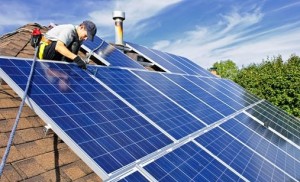Thermal and Photovoltaic Solar Energy

Solar Energy is, basically, energy given by the sun. This energy comes in the form of solar radiation, which makes the generation of sun powered electricity conceivable. It produces power when it is popular – amid the day, especially hot days when aeration and cooling systems drive up power request. Being used, solar energy has no harmful effect on the environment. One megawatt hour of sun oriented power counterbalances around 0.75 to 1 ton of CO2
Two principle sorts of solar energy systems are being used today:
- Photovoltaics System
- Thermal System
Photovoltaics System:
Power can be created straightforwardly from Photovoltaic, PV, cells. (Photovoltaic truly signifies “light” and “electric.”) These cells are produced using materials which display the “photovoltaic impact” i.e. at the point when daylight hits the PV cell, the photons of light energize the electrons in the cell and cause them to flow, producing electricity.
Photovoltaics System converts the solar radiation into electricity by a variety of methods. The most common approach is to use silicon cells and the working of these cells has been explained in the above paragraph. Solar Photovoltaics are particularly profitable for remote rural areas where it is very expensive to supply power from the utility line. Photovoltaic panels are being utilized progressively, both in the city and in remote areas, to create power for family units, schools and groups, water pumps, telecommunication industry.
The performance of these solar cells is measured by the efficiency it shows at converting the sunlight into electricity. Only certain wavelength of sunlight can produce energy necessary to generate electricity, sunlight with other wavelengths is rather reflected or absorbed by the material that make up the cell. If the efficiency of Photovoltaic cells is low, then it means that a large number of photovoltaic cells are needed which means higher cost. Researcher and Scientists are working in the areas where they can increase the efficiency of PV cells while holding down the cost.
Thermal System:
Solar Thermal Systems look to store heat from the sun that can be utilized for a variety of purposes. Various methodologies can be utilized here, including dynamic frameworks, for example, solar hot water heaters, active systems, passive systems, in which smart designing results in a building that naturally stores and uses solar energy. Greenhouses are a prime contender for such solar energy design, in which they gather solar energy on sunny days in winter and use it to keep the house warm during the night.
Benefits Of Solar Energy:
- It is the most natural and sustainable form of energy which means that we will never run out of it.
- It does not produce any type of harmful emissions and do not have any harmful effects on our environment.
- It is also a silent form of energy, meaning that it does not produce any noise while generating electricity.
- It requires very less maintenance. After the PV cells are installed, you only need to check them once a year.